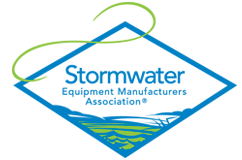- Home
- Who We Are
- Advocacy
- Stormwater Basics
- BMP Maintenance
- BMP Systems
- BMP Fact Sheets
- BMP Suppliers
- Biofiltration Soils
- Catch Basin Insert
- Construction Site BMP
- Debris Separator
- BMP Maintenance Suppliers
- Flow Restrictor and Regulator
- Hydrodynamic Separator
- Modular Dentention and Retention Systems
- Oil Water Separator
- Permeable Pavers and Permeable Asphalt Products
- Pretreatment Devices
- Rain Water Harvesting
- Spill Control and Containment Systems
- Stormwater Filtration System
- Stormwater Trash Debris Netting
- Tree Box Filter
- Stormwater Science
Detention/Retention PondsThere is a distinction between detention and retention ponds. Below are brief descriptions. Detention Pond
A detention pond is an area that was excavated placed near tributaries of rivers, streams, lakes or bays to protect against flooding and, in some cases, downstream erosion by storing water for a limited period of a time. If no permanent water is contained within these ponds, they are called "dry ponds," or "dry detention basins." These basins are constructed during new land development projects and can be a stand alone BMP or part of a treatment train. Dry detention ponds can also be referred to extended detention basins, detention ponds, and extended detention ponds. The basins are designed to temporarily detain stormwater runoff. The length of time the water is held is determined by design, weather and local regulatory requirements. The detaining of the water allows floatables and larger particles and associated pollutants to settle to the bottom of the pond. Retention Pond
A retention basin is used to manage stormwater runoff and prevent downstream erosion and improve the quality of the water emptied into adjacent rivers, lakes and streams. A retention pond, sometimes referred to as a "wet pond" or a "wet detention basin," is an artificial lake typically surrounded by vegetation and continually contains water. These ponds treat incoming stormwater runoff by allowing particles to settle and various types of vegetation to take up nutrients. Both detention and retention ponds require maintenance in order to work as designed. Detention/Retention Ponds MaintenanceBefore commencing maintenance activities please refer to any an all plans or details for the pond (open feature) to be maintained for any specific maintenance instructions. Prior to conducting any work on site all personnel must don appropriate high visibility vests, and as required, hard hats, steel-toed safety booths and safety glasses. Immediately upon arrival at the work site position all traffic control devices to ensure safety for motorists and pedestrians (if applicable). Be advised, in most cases ponds will be gated and will require a key or combination or access. On a pre-prepared inspection report note all site conditions relating to the pond(s) and the surrounding area. The report should include observations regarding the stability of the watershed contributing to the pond in regards to landscaped areas, i.e. is there erosion occurring? Or are there any conditions present that may bring large quantities of sediment and debris to the pond? Observations should be taken with regards to the outlet control structure, emergency spillway(s), inlets/forebays, outfalls, embankments, vegetation, rodents/insects, water level, sedimentation and trash/debris depending on the design of the open feature. Wet Basins (i.e. Wet Retention Ponds)Wet basins should be inspected at least twice per year for proper function, sedimentation, trash/debris and erosion. Outlet control structure (OCS) and emergency spillway should be inspected for blockages and cleared of all trash, debris and vegetation. Trash and debris should be removed from basin and forebay. Sediment should be removed as necessary, at a minimum every 10 years. Extended Dry Detention Basin:Inspect forebay semi-annually to ensure that it is working in its intended fashion and that it is free of trash and debris. Remove and properly dispose of any accumulated sediment or debris as needed. Inspect the embankments and outlet for settlement or signs of slope erosion. Mow the upper embankment and/or vegetated spillway to control woody vegetation. Inspect Outlet Control Structures to ensure they are in good working order and that the orifice and trash racks are unobstructed from trash and debris. Resources: EPA Article: Dry Detention Ponds EPA Article: Wet Detention Ponds EPA Article: Designing Urban Detention Ponds to Support Healthy Ecosystems
ProvidersSuppliers of products for Detention/Retention Ponds
|

